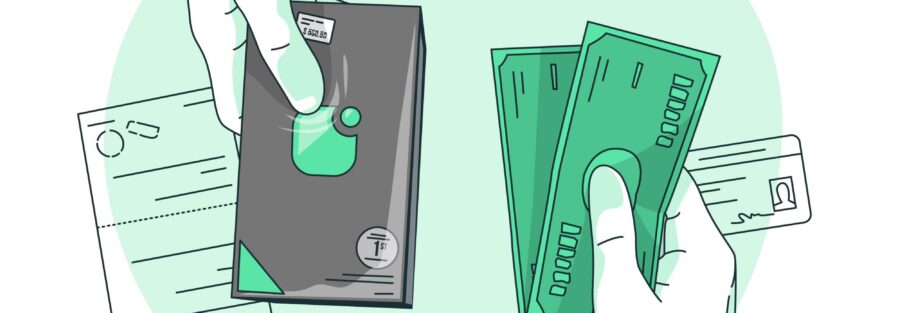Introduction
Argentina, a nation with a rich history and vibrant culture, has long been plagued by economic instability. Chronic inflation, currency depreciation, and recurrent debt crises have cast a shadow over the country’s economic prospects, hindering its growth and impoverishing its citizens. In the grand spectacle of global economics, Argentina has chosen a partner for a daring tango – a dance of economic transformation and resilience. Javier Milei, the new President of Argentina, had earlier promised during election campaigns that if elected president, he would implement a full dollarization of the Argentine economy. This means Argentina would abandon its Peso and embrace the US dollar as its primary means of exchange. Milei argues that dollarization would be a necessary step to break Argentina’s cycle of chronic inflation. He believes that the peso is too volatile and susceptible to manipulation by the government, which has led to rampant inflation over the years. By adopting the dollar, Argentina would gain the stability it needs to attract investment and grow its economy. This shift would have far-reaching implications for the Argentine economy, potentially offering a path toward stability and prosperity. So, the stage is set against the backdrop of historical financial turbulence, where the Argentine peso has stumbled, leaving the nation in a perpetual struggle for stability. As Argentina holds its breath in anticipation, the central question lingers, can dollarisation emerge as a cure for an economy shackled by runaway inflation?
What is Dollarisation?
Dollarization, also known as currency substitution, is the adoption of a foreign currency, most commonly the United States dollar (USD), as a parallel or official currency alongside or instead of the domestic currency. This can happen either formally, through government policies, or informally, as individuals and businesses opt to use foreign currency more commonly than domestic one. Full dollarization occurs when the foreign currency becomes the sole legal tender, effectively replacing the domestic currency. This is the most extreme form of dollarization, and it is relatively rare. Partial dollarization occurs when the foreign currency is used alongside the domestic currency. This can be done in a variety of ways, such as using foreign currency for large transactions or savings while using domestic currency for everyday purchases.
Countries with high inflation rates and weak currencies often find stability in dollarization. In 2000, Ecuador became the first country in modern history to fully dollarize its economy. El Salvador too adopted dollarization in 2001. Panama is using the US dollar as its official currency since 1903, while Timor-Leste adopted the same in 2000. Kosovo and Montenegro have been using the Euro since 1999 and 2002 respectively. Zimbabwe too adopted dollarisation in 2009, after experiencing hyperinflation for several years.
The stability of the foreign currency helps to stabilize the domestic economy and reduce inflation. Investors become more likely to invest in countries with stable currencies, which leads to increased economic growth. Businesses can also avoid the costs and risks of currency exchange when trading with other countries. However, this also means that the government will lose the ability to control its own money supply and interest rates, which can make it difficult to respond to economic shocks. The government will also have to borrow in foreign currency, which can be more expensive than borrowing in domestic currency.
Current state of the Argentine economy
Argentina’s economic situation has been characterized by periods of stability and instability, with high inflation, currency depreciation, and recurrent debt crises being common challenges. The country has a long history of economic volatility, and it has experienced several economic crises in recent decades. In 2023, the annual inflation rate was estimated to be 72.4%, according to the International Monetary Fund (IMF). This is significantly higher than the global average of 6.6%. High inflation has eroded the purchasing power of Argentines and has made it difficult for businesses to plan for the future. In 2023, the peso depreciated by 52.3% against the US dollar, making it one of the worst-performing currencies in the world. This has made it more expensive for Argentines to import goods and services, and it has also made it more difficult for the government to service its external debt. The country has defaulted on its debt three times since 2001, with the most recent default being in 2020. This has made it more difficult for Argentina to borrow money from international lenders, and it has also contributed to the country’s high inflation rate. The IMF has forecast that Argentina’s economy will contract by 1.6% in 2023, but it is expected to grow by 1.1% in 2024. Inflation is expected to slow to 60.5% in 2023 and 31.4% in 2024. However, these forecasts are subject to significant uncertainty, and the country is still at risk of another economic crisis. Thus, Argentina needs to find a way to bring inflation under control to create a stable economic environment. It also needs to strengthen the value of the peso to make it more competitive internationally. Further, the government needs to reduce its public debt burden to improve its fiscal position and regain access to international capital markets.
Why is Argentina opting for dollarisation?
One of the primary benefits of dollarisation is its potential to curb hyperinflation. By using a stable and globally recognized currency like the US Dollar, Argentina could achieve price stability, providing confidence to consumers and businesses. A stable currency often leads to lower interest rates, making it more attractive for foreign investors to put their money into the country. This can stimulate economic growth by providing businesses with cheaper access to capital. Conducting trade in a widely accepted and stable currency can simplify international transactions. Dollarisation can enhance Argentina’s competitiveness in the global market and reduce currency-related risks for businesses engaged in international trade. Adopting a foreign currency may act as a check on fiscal imprudence. With limited control over the money supply, the government is incentivized to pursue responsible fiscal policies, avoiding excessive spending and deficits. Businesses and consumers face less uncertainty in a dollarized economy, as they are not exposed to the risks associated with currency depreciation. This stability can lead to increased investment and improved economic planning. Dollarisation can also protect the value of people’s savings, offering a more secure store of value compared to a volatile domestic currency. This can lead to increased confidence among consumers and businesses.
Conclusion
Dollarisation has been implemented in various countries around the world, and its success or failure is often context-dependent. Different nations have experienced different outcomes based on their unique economic and political circumstances. In the countries opting for Dollarisation, the adoption of the US Dollar has brought stability to prices, interest rates, and the overall economy. It has also helped to restore confidence and attract foreign investment. However, such countries have also faced challenges such as a loss of control over monetary policy, and a limited ability to address economic shocks. The move has generated both support and criticism, however, its long-term success is yet to be determined. It’s essential to recognize that the success of dollarisation depends on a variety of factors, including the specific economic conditions of the country, the level of public and political support, and how well the transition is managed. Thus, as Argentina navigates uncharted waters, it would be exciting to see whether dollarisation works as a lifeline for the country that desperately needs to revive its economic fortunes or a gamble with far-reaching consequences.
References



